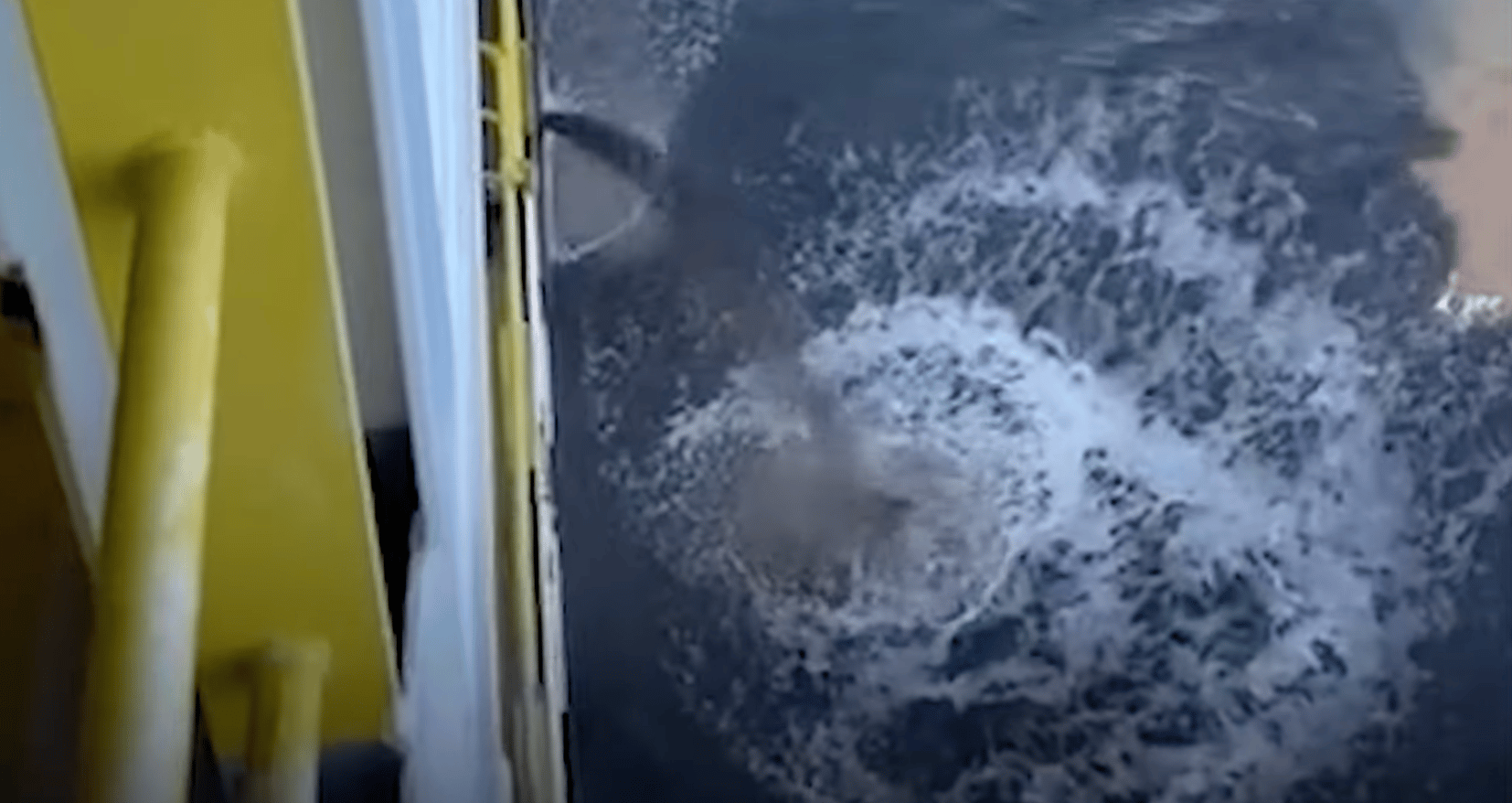Leaked Video Shows Sediment Release in Deep-Sea Mining Test

 Why you can trust us
Why you can trust us
Founded in 2005 as an Ohio-based environmental newspaper, EcoWatch is a digital platform dedicated to publishing quality, science-based content on environmental issues, causes, and solutions.
A leaked video of a deep-sea mining test showing a plume of sediment being released into the ocean is reigniting concerns about the controversial practice.
The video, shared on Youtube by Greenpeace Aotearoa on January 11, shows a vessel belonging to Canadian-based The Metals Company (TMC) siphon up wastewater from the seabed and release it into the ocean’s surface. Scientists have warned that sediment plumes from deep-sea mining could spread for hundreds of kilometers, smothering marine life and exposing it to dangerous toxins.
“Deep sea mining company The Metals Company and its operating partner, AllSeas, demonstrate a blatant disregard for the environment and to people around the world who depend on healthy oceans,” Louisa Casson of Greenpeace International’s Stop Deep Sea Mining campaign said in a statement responding to the video. “The exposure of this incident and scientists’ criticism of the companies’ approach provide yet more reasons why deep sea mining should not be allowed to start on a commercial scale.”
The controversy surrounding deep-sea mining has mounted in recent years as proponents argue it is necessary to source the metals and minerals needed for the renewable energy transition. TMC, for example, is hoping to gather “polymetallic nodules” from the seabed that contain nickel, copper, cobalt and manganese, The Guardian explained. Many scientists, however, argue that mining the seabed would cause “irreversible damage” to unique and little-understood ecosystems and is not actually necessary. More than 700 scientists have called for a moratorium on the practice until its risks can be more fully understood.
Despite this, the International Seabed Authority (ISA) gave TMC subsidiary Nauru Ocean Resources Inc (NORI) permission to conduct mining tests in the Clarion Clipperton Zone (CCZ) of the Pacific Ocean between Mexico and Hawaii in 2021. It was during these tests, which ran from September to November of that year, that the videoed incident took place, as The Guardian reported.
The video was posted by scientists hired by the company who said it showed an accidental release that pointed to underlying problems with the company’s process. Further, they said in documents seen by The Guardian that the company’s environmental monitoring strategy was insufficient.
In response, TMC said on its website that the video depicted a “minor event” and that the sediment released did not contain any toxic heavy metals that could harm marine life.
“In more detail: during the production ramp-up sequence in October a temporary overflow of water occurred,” the company said. “Due to the dynamic behavior of the airlift riser when first switched on, there was a surge in the volume of water flow which briefly exceeded the buffer capacity of the cyclone separator at the top of the riser. As a result, the cyclone experienced a minor overflow of water containing a small amount of sediment and nodule fragments.”
The company further said that the overflow took place off and on over the course of a seven-to-eight-hour test that was stopped once it was safe to do so. NORI told the ISA about the incident and also presented further details to the regulator about how it would prevent it from recurring.
However, scientists’ observations cast doubt on NORI and Allseas’ conclusion that the release did no damage. They said that the company did not use the right instruments to measure sediment plumes or rely on plume physics in their assessments, according to Greenpeace. They also said scientists were asked to take samples in parts of the ocean the discharge hadn’t actually reached.
The ISA told The Guardian that it was waiting for a more detailed report from the company but that its first assessment “identified no threat of harm to the environment.”
But anti-mining advocates have also cast doubt on the ISA’s ability to effectively regulate deep-sea mining.
“The International Seabed Authority played a significant role in the failures of this latest deep sea mining test and has also failed to publicize the unauthorized dumping of mine waste,” Dr. Catherine Coumans of MiningWatch Canada said in a statement shared by Greenpeace. “In its rush to approve the test without following appropriate procedures, many key elements of a professional monitoring trial were lacking, including ensuring adequate access for independent observers, transparent and timely public reporting and sufficient whistleblower safeguards. This test highlights the ISA’s lack of transparency and credibility as a regulator and the very immediate risks posed by deep sea mining on marine health and biodiversity of the ocean, our global commons.”
She also expressed concern that deep-sea mining was starting out with even less oversight than its land-based counterpart.
“What we’ve seen is an unauthorised release and, in terrestrial mining, this would have consequences of some sort,” she said, as The Guardian reported.
Subscribe to get exclusive updates in our daily newsletter!
By signing up, you agree to the Terms of Use and Privacy Policy & to receive electronic communications from EcoWatch Media Group, which may include marketing promotions, advertisements and sponsored content.

 233k
233k  41k
41k  Subscribe
Subscribe 




